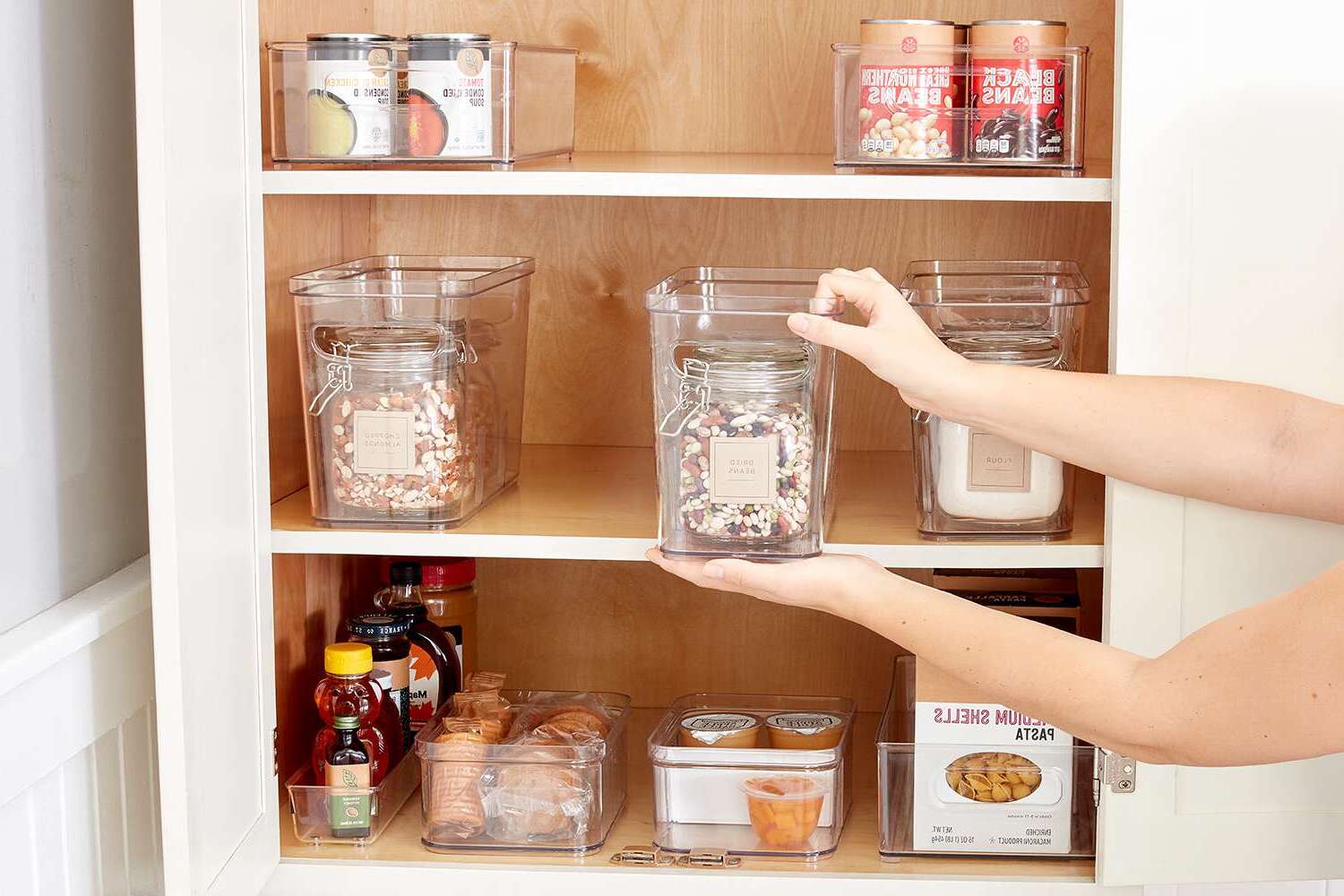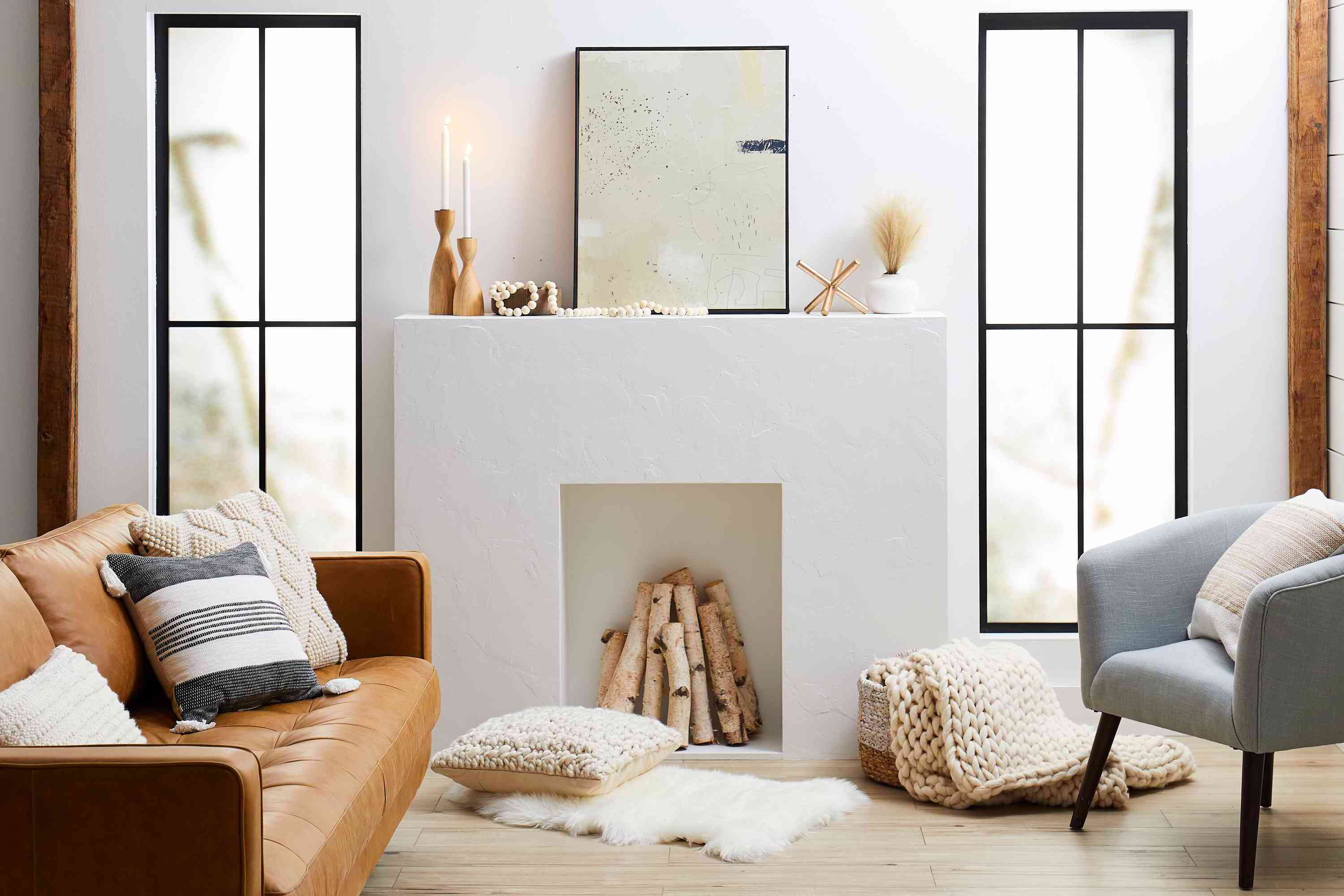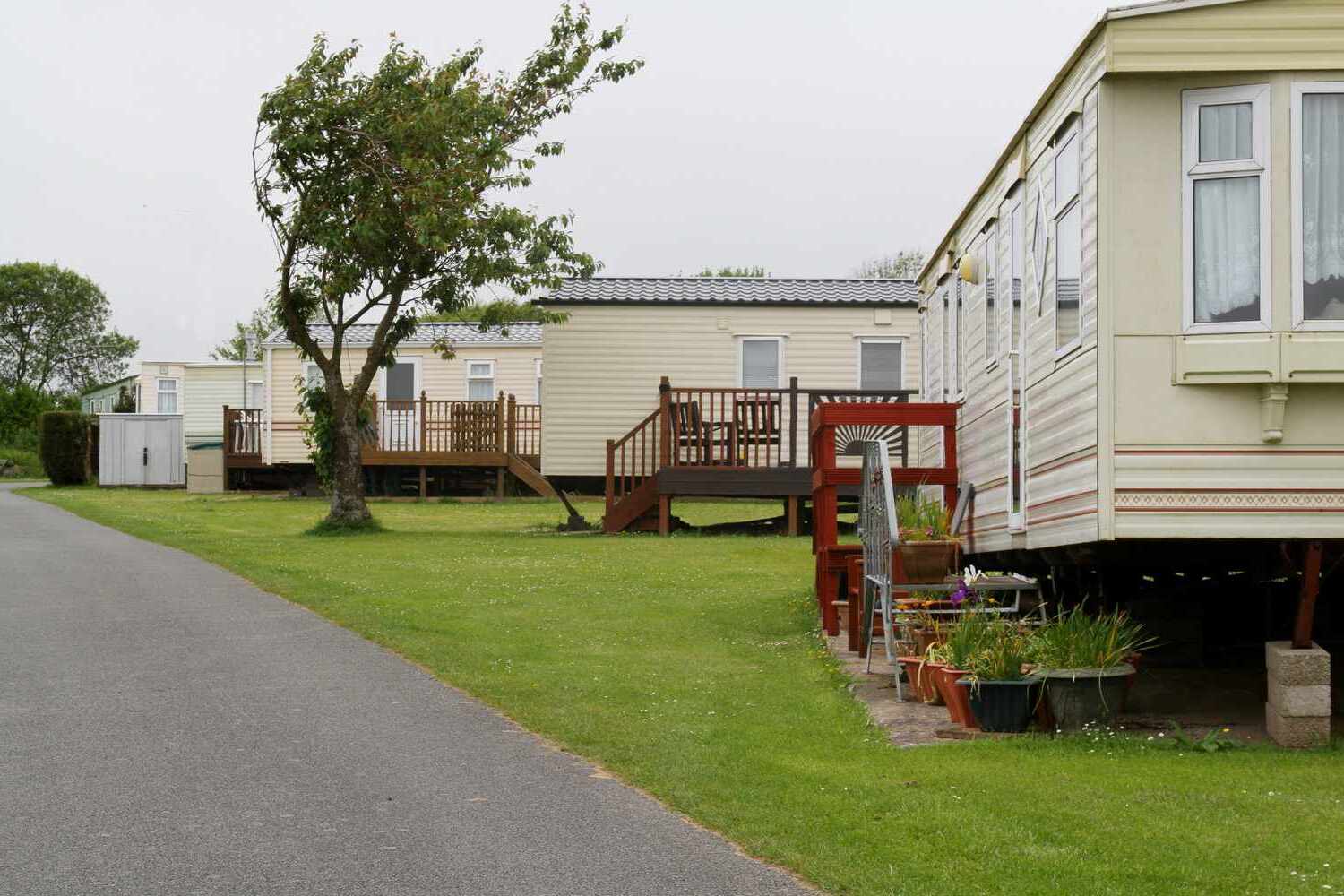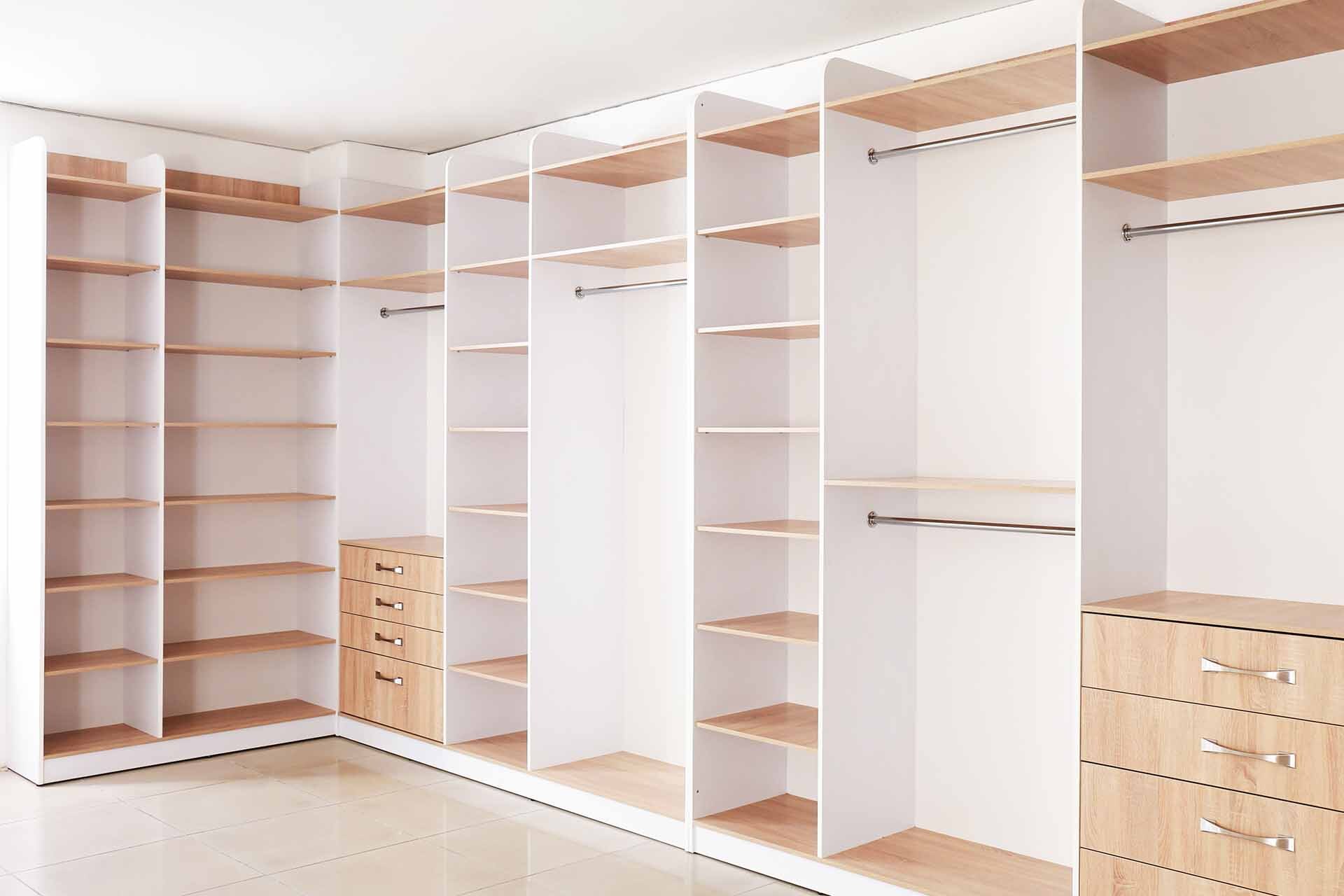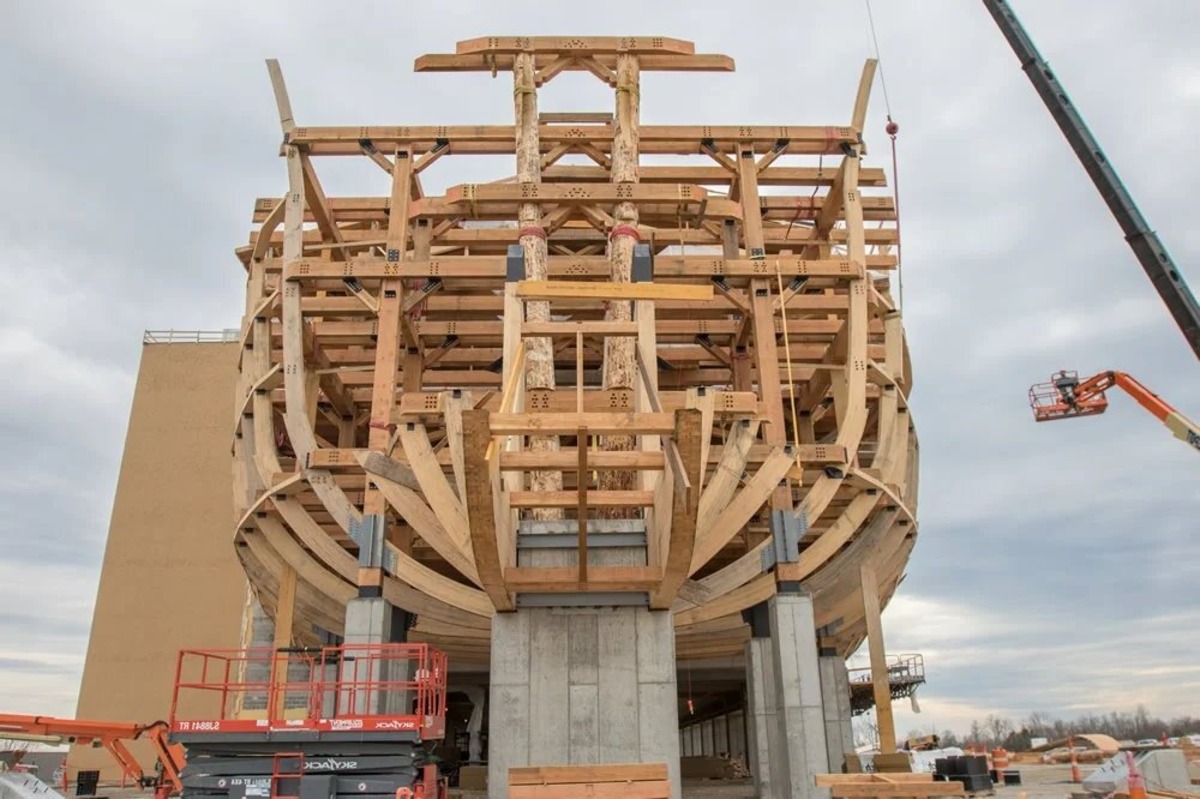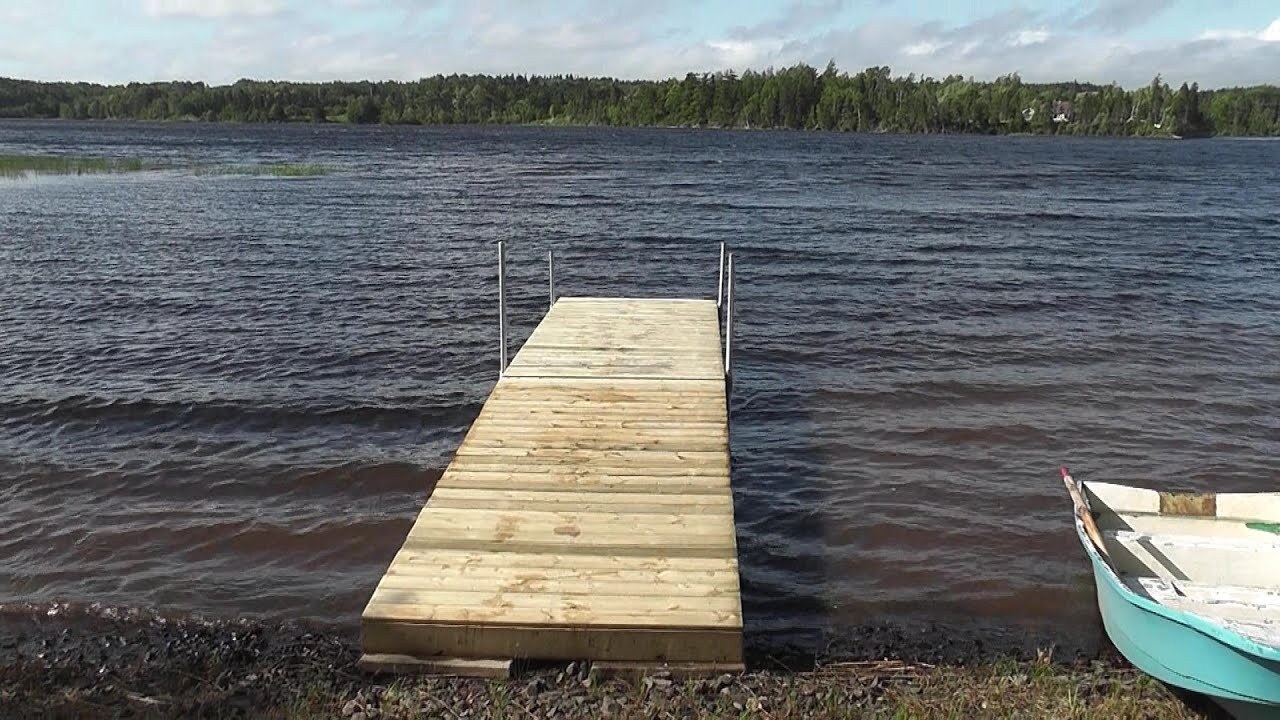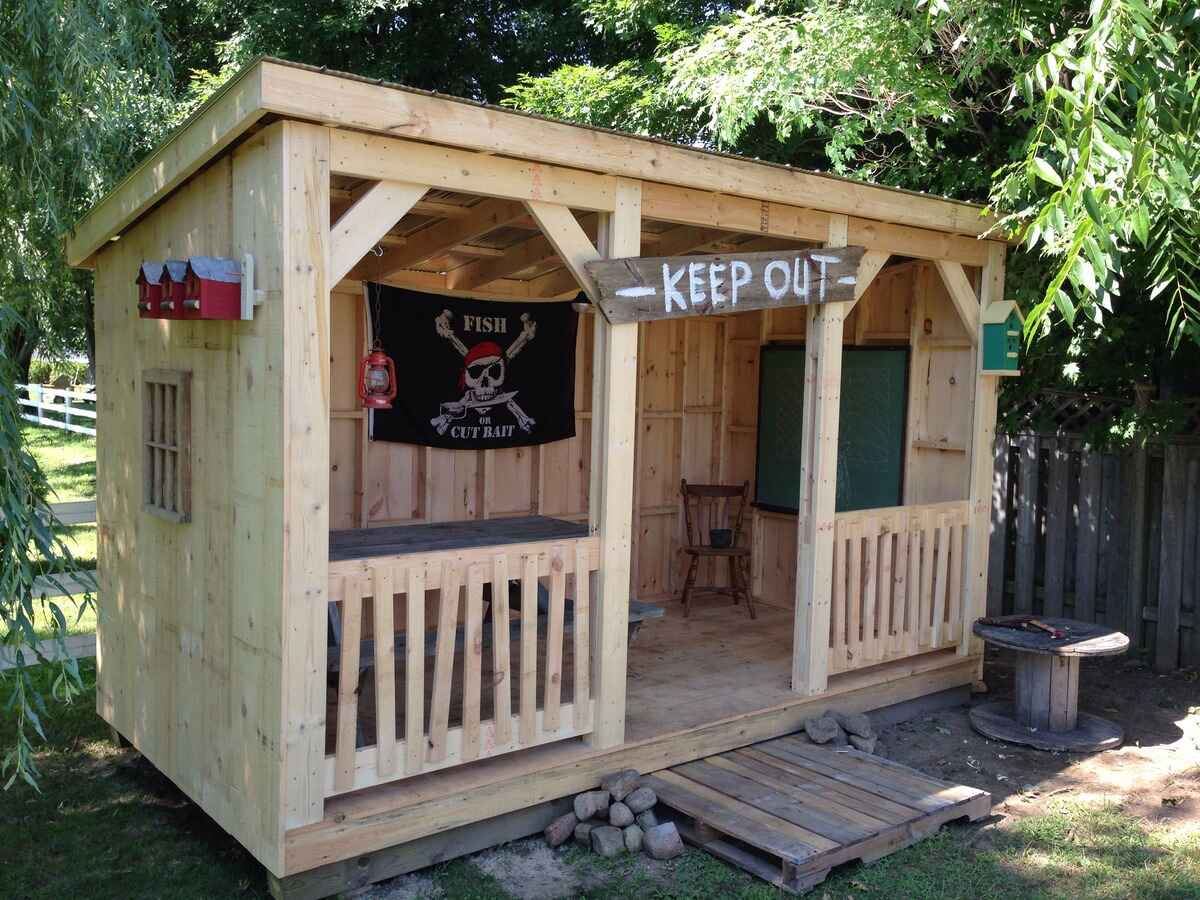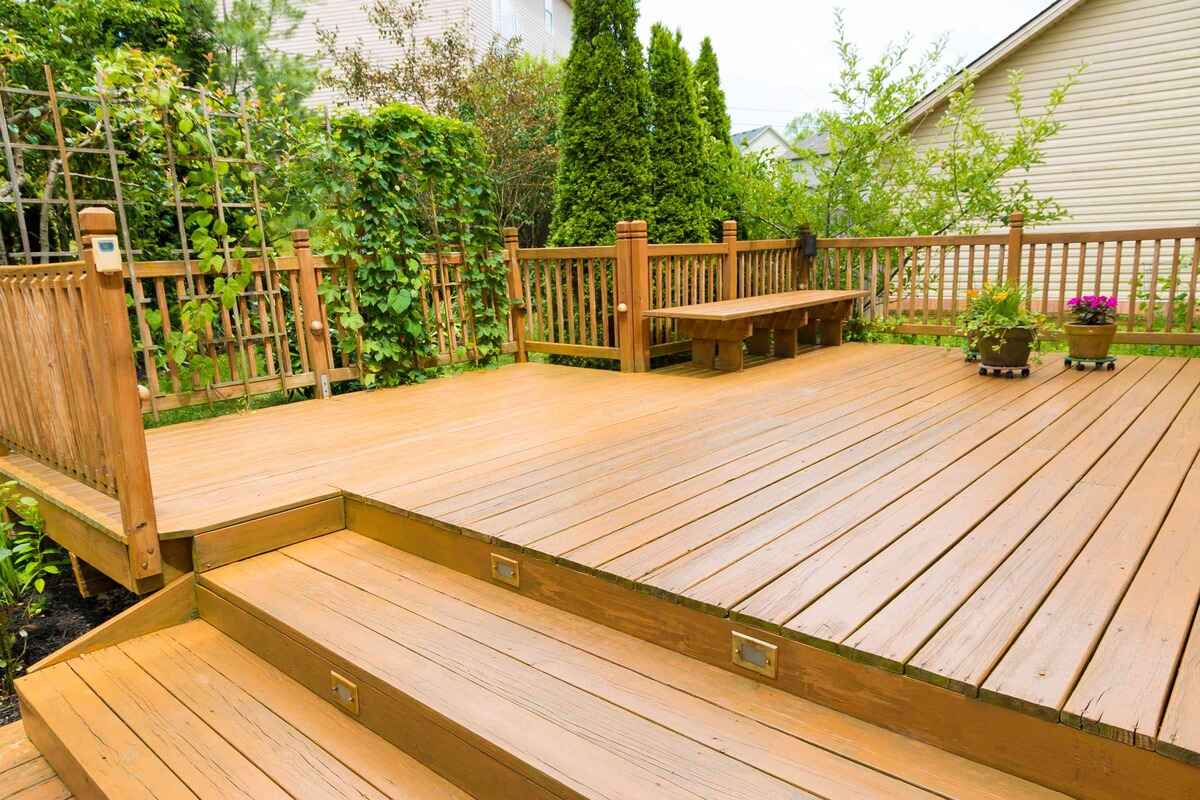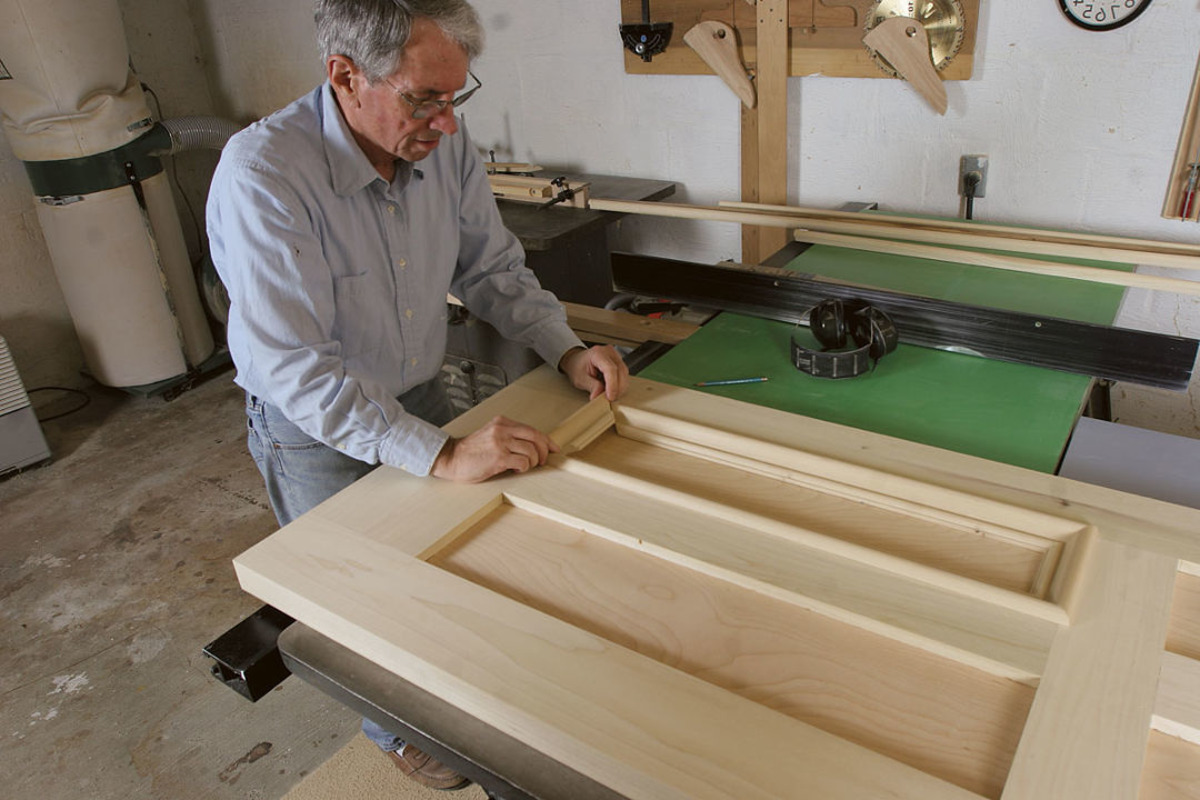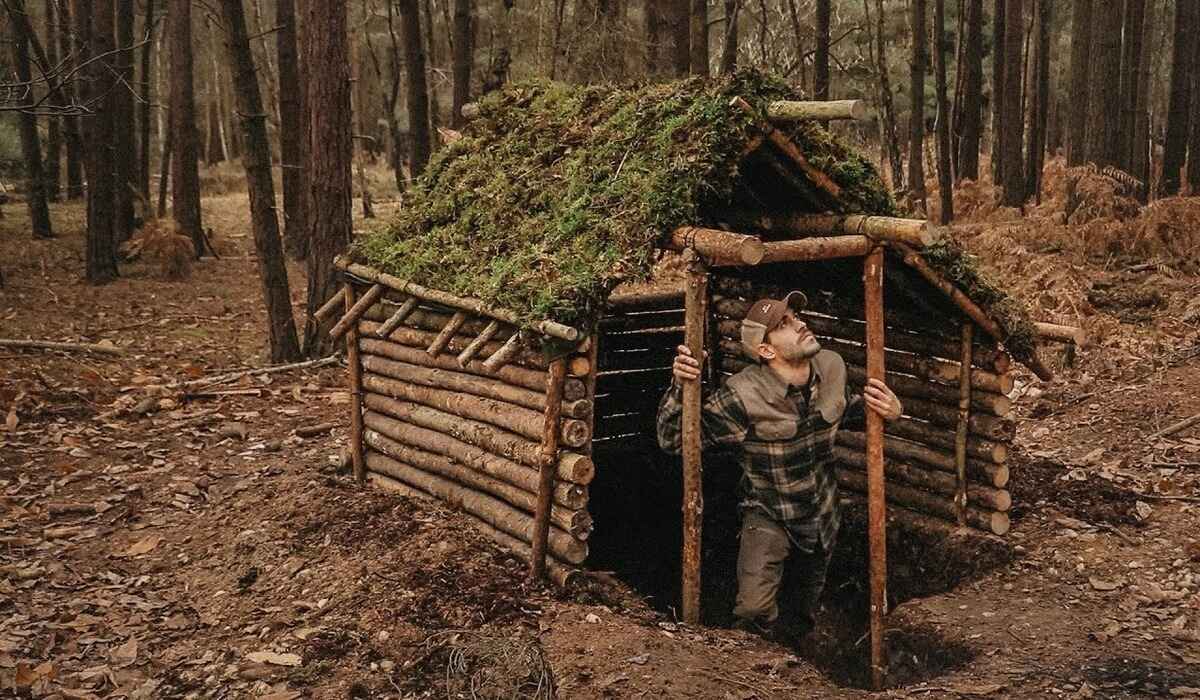Home>Create & Decorate>DIY & Crafts>How To Build A Teepee
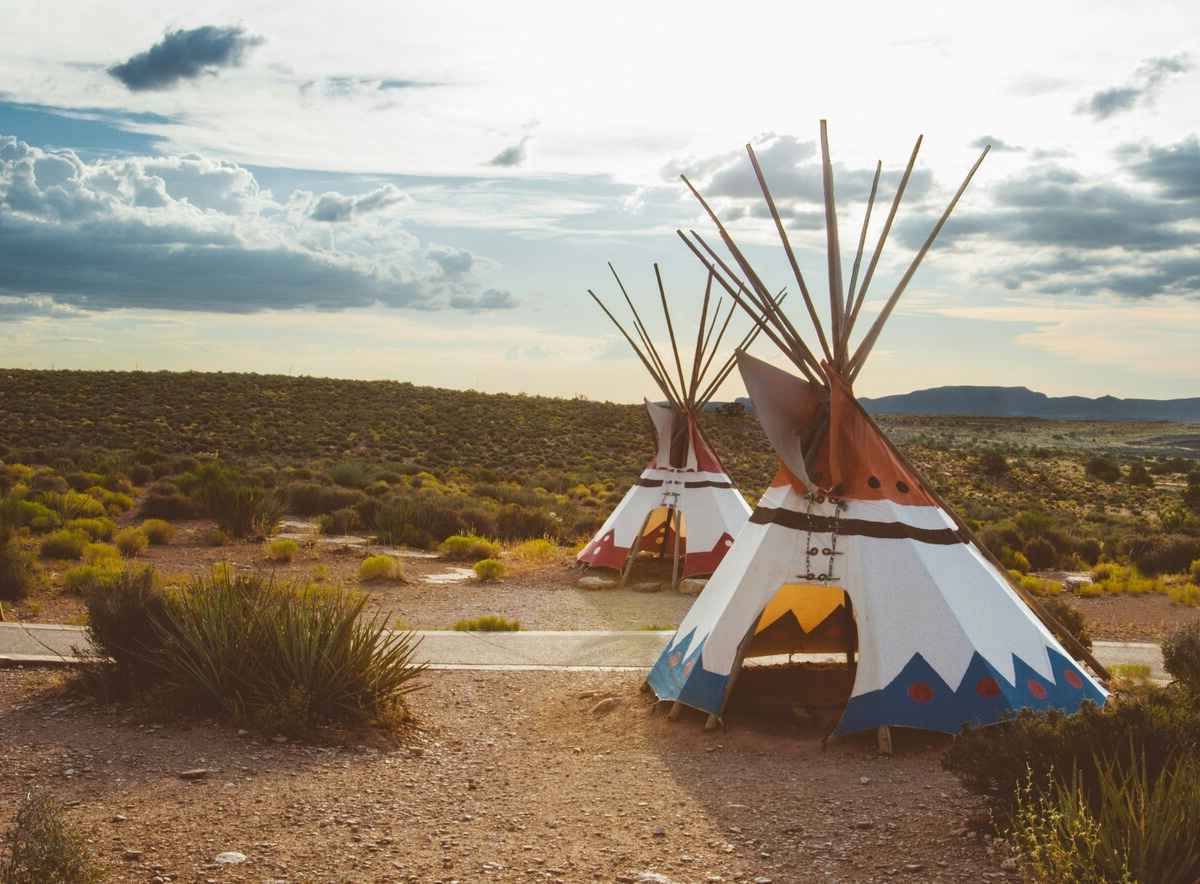

DIY & Crafts
How To Build A Teepee
Published: February 27, 2024

Content Creator specializing in woodworking and interior transformations. Caegan's guides motivate readers to undertake their own projects, while his custom furniture adds a personal touch.
Learn how to build a teepee with our easy DIY & Crafts guide. Create a cozy and stylish space with simple materials and step-by-step instructions.
(Many of the links in this article redirect to a specific reviewed product. Your purchase of these products through affiliate links helps to generate commission for Twigandthistle.com, at no extra cost. Learn more)
Introduction
Building a teepee is a wonderful way to add a touch of rustic charm to your outdoor space. Whether you're looking for a cozy spot to relax in your backyard or a unique play area for your kids, a teepee can be a fantastic addition to your home. The process of constructing a teepee is not only enjoyable but also surprisingly simple, making it an ideal project for a weekend DIY enthusiast.
In this comprehensive guide, we will walk you through the step-by-step process of building your own teepee. From selecting the perfect location to adding personalized touches, you'll learn everything you need to know to create a stunning and functional teepee that suits your needs and style.
So, gather your materials and get ready to embark on a rewarding journey of craftsmanship and creativity. Whether you're a seasoned DIY enthusiast or a novice looking for a fun project, building a teepee is a fulfilling endeavor that promises to bring joy and a sense of accomplishment. Let's dive in and explore the exciting world of teepee construction!
Read more: How To Build A Sauna
Materials Needed
To embark on the exciting journey of building your own teepee, you'll need a few essential materials to ensure a smooth and successful construction process. Here's a comprehensive list of the items you'll need to gather before diving into this enjoyable DIY project:
1. Wooden Poles:
- Select sturdy and straight wooden poles, such as bamboo or cedar, to form the frame of the teepee. The number of poles required will depend on the size of the teepee you intend to build.
2. Canvas or Fabric Cover:
- Choose a durable and weather-resistant fabric to serve as the cover for your teepee. Canvas is a popular choice due to its strength and ability to withstand outdoor elements.
3. Rope or Twine:
- High-quality rope or twine will be essential for securing the wooden poles together and attaching the fabric cover to the frame.
Read more: How To Build A Cupola
4. Groundsheet:
- A waterproof groundsheet or tarp will provide a protective layer between the ground and the interior of the teepee, keeping the space dry and comfortable.
5. Decorative Materials (Optional):
- If you plan to personalize your teepee, consider gathering decorative materials such as paint, feathers, beads, and other embellishments to add a unique touch to the finished structure.
6. Tools:
- Gather basic tools such as a hammer, nails, a saw, and measuring tape to aid in the construction process.
7. Lashing Straps (Optional):
- Lashing straps can be used to secure the wooden poles together with ease, providing additional stability to the teepee frame.
Read more: How To Build A Trebuchet
8. Waterproof Sealant (Optional):
- If you anticipate exposing the teepee to frequent rain or moisture, a waterproof sealant can be applied to the fabric cover for added protection.
By ensuring that you have all the necessary materials at your disposal, you'll be well-prepared to commence the construction of your teepee with confidence and enthusiasm. With these items in hand, you're ready to move on to the next exciting phase of the teepee-building process: choosing the perfect location for your new outdoor sanctuary.
Step 1: Choosing a Location
Selecting the ideal location for your teepee is a crucial first step in the construction process. The chosen spot will not only determine the visual impact of the teepee but also influence its functionality and overall ambiance. Here are essential considerations to guide you in choosing the perfect location for your teepee:
-
Level Ground: Look for a flat and level area in your yard or outdoor space. This will ensure stability and ease of setup for the teepee frame. Avoid areas with significant slopes or uneven terrain to prevent structural issues and instability.
-
Sun and Shade: Consider the sun's movement throughout the day. Choose a location that offers a balance of sunlight and shade, providing comfort for occupants during different times. Additionally, be mindful of any nearby trees or structures that may cast shadows on the teepee.
-
Wind Direction: Assess the prevailing wind direction in your area. Position the entrance of the teepee away from the primary wind direction to minimize drafts and ensure a more comfortable interior environment. This thoughtful placement can enhance the overall usability of the teepee.
-
Privacy and Views: Evaluate the surrounding landscape to determine the level of privacy and desired views. Whether you seek a secluded retreat or a spot with scenic vistas, the location should align with your preferences, offering a serene and visually appealing setting for the teepee.
-
Accessibility: Ensure that the chosen location is easily accessible from your home or main activity areas. This convenience will encourage frequent use of the teepee and make it more integrated into your outdoor lifestyle.
-
Ground Preparation: Before setting up the teepee, clear the chosen area of any debris, rocks, or sharp objects that could potentially damage the fabric cover or pose safety hazards. A clean and well-prepared site will contribute to the longevity and functionality of the teepee.
By carefully considering these factors, you can identify a location that not only complements the aesthetic appeal of the teepee but also enhances its practicality and comfort. Once you've selected the perfect spot, you can proceed to the next exciting phase of the teepee construction: setting up the frame.
Step 2: Setting Up the Frame
Setting up the frame of your teepee is a pivotal stage that lays the foundation for the overall structure. This process requires precision and attention to detail to ensure a sturdy and visually appealing framework. Follow these steps to expertly set up the frame of your teepee:
-
Gather and Arrange the Wooden Poles: Begin by gathering the wooden poles you've selected for the frame. Lay them out and inspect each pole for any imperfections or irregularities. Arrange the poles based on size, placing the longest ones at the back and the shorter ones towards the front. This arrangement will facilitate a smooth and organized assembly process.
-
Positioning the Poles: With the help of a friend or family member, stand the first pole upright at the chosen location for the teepee. Gradually add the remaining poles around the central pole, forming a circular arrangement. Ensure that the poles are evenly spaced and positioned at the desired angle to create a symmetrical and stable frame.
-
Securing the Poles: Once the poles are in position, use sturdy rope or twine to lash the tops of the poles together. Begin the lashing process at a comfortable height, gradually working your way down to secure the entire length of the poles. This technique will effectively bind the poles together, providing structural integrity to the frame.
-
Adjusting Pole Placement: After securing the poles, assess the overall alignment and stability of the frame. Make any necessary adjustments to ensure that the poles are securely positioned and form a balanced structure. This step is crucial in achieving a well-proportioned and stable frame for the teepee.
-
Checking for Stability: Test the stability of the frame by gently pushing and nudging it from different angles. A stable frame will withstand these tests without significant movement or wobbling. Address any areas of concern by reinforcing the lashings or adjusting the pole placement to enhance the overall stability of the frame.
By meticulously following these steps, you can expertly set up the frame of your teepee, laying the groundwork for the next phase of the construction process. With the frame securely in place, you're ready to move on to the exciting stage of adding the cover to your teepee, bringing it one step closer to completion.
Step 3: Adding the Cover
With the frame of your teepee securely in place, it's time to add the cover, a step that will not only provide shelter but also contribute to the aesthetic appeal of the structure. Adding the cover requires careful handling of the fabric and attention to detail to ensure a snug and weather-resistant fit. Follow these detailed steps to expertly add the cover to your teepee:
-
Prepare the Fabric: Lay out the canvas or fabric cover in a clean and open area, ensuring that it is free from wrinkles or folds. Smooth out the fabric to create a flat surface, making it easier to handle during the installation process.
-
Positioning the Cover: With the help of a friend or family member, drape the fabric over the teepee frame, ensuring that it is evenly distributed around the circumference of the structure. Adjust the position of the cover to achieve a balanced and symmetrical appearance.
-
Securing the Cover: Starting from the top of the teepee, use sturdy rope or twine to secure the fabric to the frame. Begin by tying the rope around the top of the frame and gradually work your way down, ensuring that the cover is taut and securely fastened to the poles. This step is crucial in preventing the cover from shifting or flapping in the wind.
-
Tucking and Adjusting: As you secure the cover, tuck any excess fabric at the base of the teepee to create a neat and tidy finish. Adjust the tension of the cover as needed to eliminate any sagging or loose areas, ensuring a smooth and uniform appearance.
-
Weatherproofing (Optional): If you anticipate exposing the teepee to rain or moisture, consider applying a waterproof sealant to the fabric cover. This additional layer of protection can enhance the durability of the cover and safeguard the interior of the teepee from the elements.
-
Final Inspection: Once the cover is in place, conduct a thorough inspection to ensure that it is securely fastened and free from any potential hazards or imperfections. Test the stability of the cover by gently tugging on different sections to confirm that it is properly anchored to the frame.
By meticulously following these steps, you can expertly add the cover to your teepee, transforming it into a functional and visually appealing outdoor sanctuary. With the cover securely in place, your teepee is now ready for the next phase of the construction process: securing the structure to ensure long-lasting stability and durability.
Read more: How To Build Rafters
Step 4: Securing the Teepee
Securing the teepee is a critical step that ensures the stability and longevity of the structure, especially in outdoor environments where it may be exposed to varying weather conditions. By implementing effective securing techniques, you can fortify the teepee, safeguarding it against strong winds and other external factors. Follow these essential steps to expertly secure your teepee:
-
Anchoring the Base: Begin by securing the base of the teepee to the ground. Utilize sturdy stakes or anchors designed for outdoor use to firmly anchor the bottom edges of the fabric cover. Drive the stakes into the ground at an angle, ensuring a secure grip to prevent the teepee from shifting or lifting during windy conditions.
-
Tensioning the Cover: Assess the tension of the fabric cover and make any necessary adjustments to ensure that it is taut and resistant to flapping in the wind. Proper tensioning not only enhances the structural integrity of the teepee but also contributes to its visual appeal, creating a smooth and streamlined appearance.
-
Lashing Reinforcement: Inspect the lashing points where the wooden poles intersect and reinforce them as needed. Check for any signs of loosening or shifting, and apply additional lashings or securements to strengthen the connections. This proactive measure can prevent potential structural instability over time.
-
Weatherproofing Enhancements: Consider applying a waterproof sealant to the base of the fabric cover, particularly the areas in direct contact with the ground. This protective measure can help prevent moisture absorption and minimize the risk of water damage, extending the lifespan of the teepee.
-
Wind Resistance: Evaluate the teepee's orientation and make adjustments to optimize its resistance to prevailing wind directions. Position the teepee in a manner that minimizes its exposure to strong winds, enhancing its ability to withstand varying weather conditions.
-
Regular Maintenance: Establish a routine for inspecting and maintaining the secured elements of the teepee. Periodically check the anchoring stakes, lashing points, and fabric cover for any signs of wear or damage, addressing any issues promptly to uphold the teepee's stability and safety.
By diligently implementing these securing measures, you can fortify your teepee, ensuring that it remains a resilient and enduring outdoor sanctuary. With the teepee securely anchored and weatherproofed, it is poised to provide a welcoming and reliable space for relaxation, gatherings, and outdoor enjoyment.
Step 5: Decorating and Personalizing
After completing the foundational steps of building your teepee, it's time to infuse your personal touch and creativity into the structure. Decorating and personalizing your teepee not only adds character and charm but also transforms it into a unique reflection of your style and preferences. Whether you're creating a cozy retreat for relaxation or a whimsical play space for children, the decorating phase allows you to tailor the teepee to suit your specific vision.
Embracing Nature's Elements
Consider incorporating natural elements into the decor to harmonize with the outdoor setting. Adorn the exterior of the teepee with garlands of dried flowers, pinecones, or twinkle lights to add a touch of natural beauty. Embracing the surrounding environment through thoughtful decor can create a seamless integration between the teepee and its outdoor surroundings.
Expressive Fabric Art
Utilize fabric paints or dyes to add artistic flair to the fabric cover of the teepee. Whether it's hand-painted patterns, vibrant designs, or meaningful symbols, expressing your creativity on the fabric allows you to personalize the teepee with a one-of-a-kind artistic statement. Encourage family members to contribute to the fabric art, fostering a collaborative and meaningful decorating experience.
Read more: How To Build A Battlebot
Cozy Textile Accents
Enhance the interior of the teepee with soft textiles and cushions to create a cozy and inviting atmosphere. Layer plush rugs, throw pillows, and blankets to establish a comfortable seating or lounging area. Select textiles in colors and patterns that resonate with your personal style, infusing the space with warmth and comfort.
Personalized Embellishments
Add personalized embellishments such as dreamcatchers, handmade bunting, or hanging ornaments to infuse the teepee with individuality. These thoughtful touches not only contribute to the visual appeal but also imbue the space with personal significance, making it a cherished retreat for relaxation, play, or creative pursuits.
Reflective Lighting
Incorporate soft and ambient lighting within the teepee to create a magical and enchanting ambiance. String fairy lights or lanterns along the interior to cast a warm and inviting glow. The gentle illumination not only enhances the visual appeal but also sets the mood for cozy gatherings and memorable moments within the teepee.
By embracing these decorating and personalizing ideas, you can elevate your teepee from a simple structure to a captivating and personalized sanctuary. The creative process of decorating the teepee allows you to infuse it with your unique style, creating a space that resonates with warmth, creativity, and personal expression.
Conclusion
In conclusion, the journey of building a teepee is not just about constructing a shelter; it's a fulfilling experience that intertwines creativity, craftsmanship, and a deep connection to the natural world. As you embark on this DIY adventure, you are not merely assembling wooden poles and fabric; you are creating a space where memories will be made, where laughter will echo, and where moments of tranquility will be cherished.
The process of building a teepee is a testament to the beauty of simplicity and the power of personal expression. From selecting the perfect location to adding personalized embellishments, every step is an opportunity to infuse the teepee with your unique vision and style. As the fabric cover is secured and the frame stands tall, the teepee becomes more than just a structure; it becomes a canvas for self-expression, a haven for relaxation, and a centerpiece for outdoor gatherings.
Moreover, the act of building a teepee fosters a deeper appreciation for nature and the elements. It invites us to embrace the beauty of the outdoors and to create a harmonious relationship between our living spaces and the natural world. The gentle sway of the fabric in the breeze and the dappled sunlight filtering through the poles serve as constant reminders of our interconnectedness with the environment.
As you add the final decorative touches, the teepee evolves into a sanctuary that reflects your personality and values. It becomes a space where you can unwind with a good book, engage in imaginative play with children, or simply bask in the serenity of the outdoors. The personalized decor and thoughtful embellishments transform the teepee into a refuge that resonates with warmth, creativity, and individuality.
In essence, the completion of a teepee is not just the end of a construction project; it marks the beginning of a new chapter filled with moments of joy, connection, and inspiration. It stands as a testament to your creativity and resourcefulness, a tangible symbol of your ability to transform simple materials into a meaningful and cherished space.
So, as you stand back and admire the teepee you've built, remember that it is more than just a structure; it is a reflection of your spirit, a celebration of togetherness, and a timeless invitation to embrace the beauty of the natural world. Whether it's a quiet retreat for solitary reflection or a lively gathering place for loved ones, your teepee stands as a testament to the enduring power of human creativity and the timeless allure of outdoor living.

